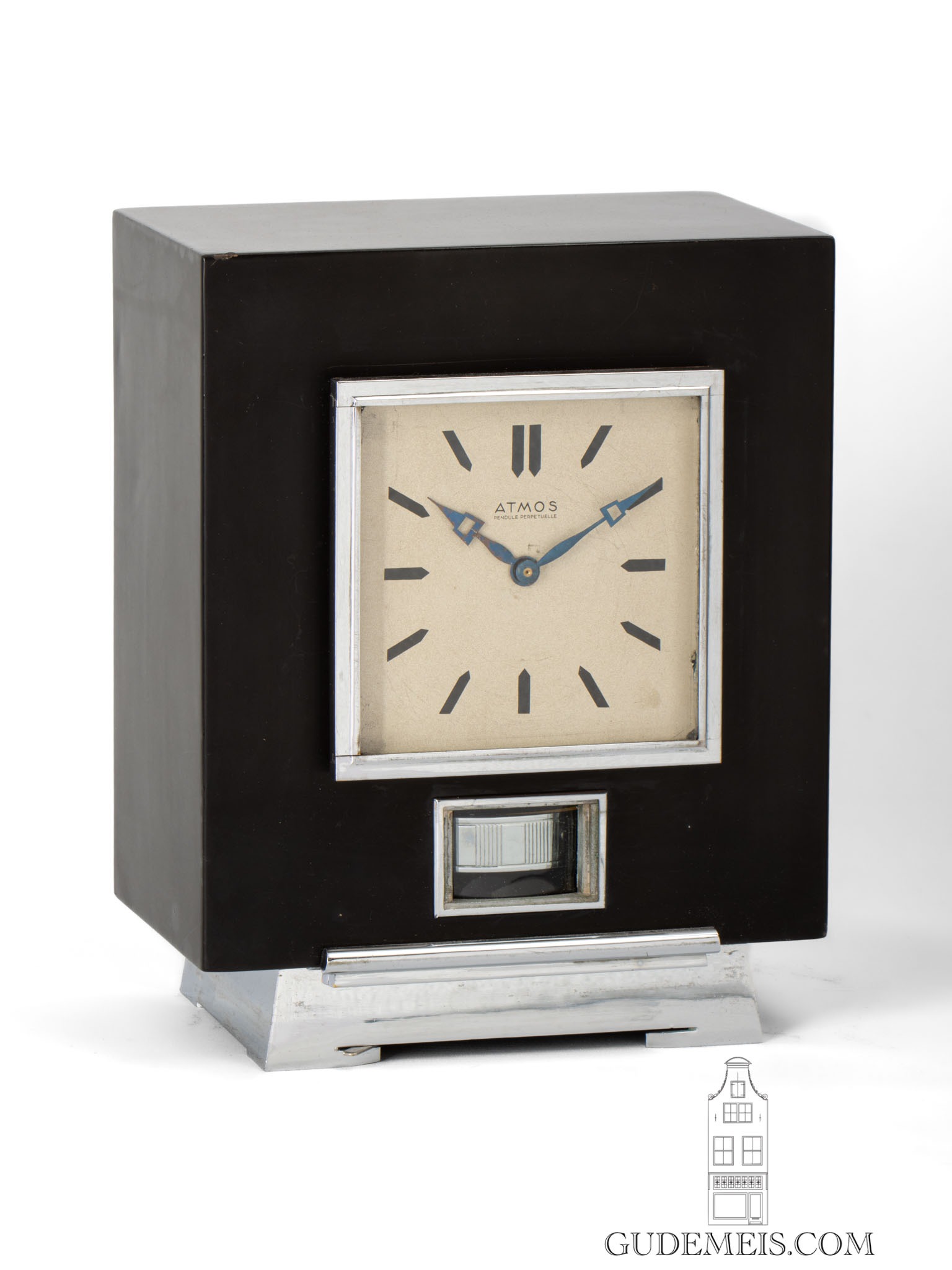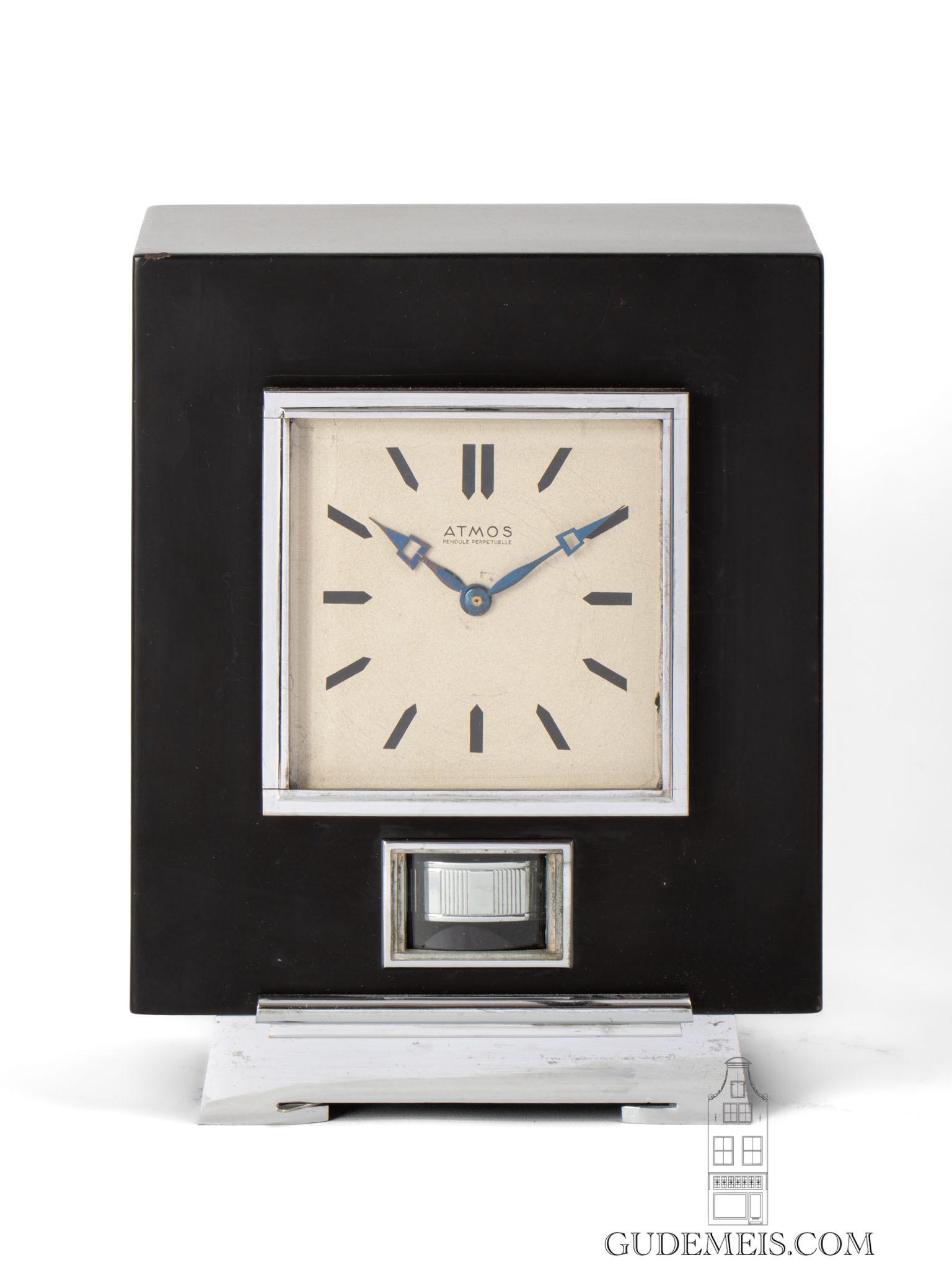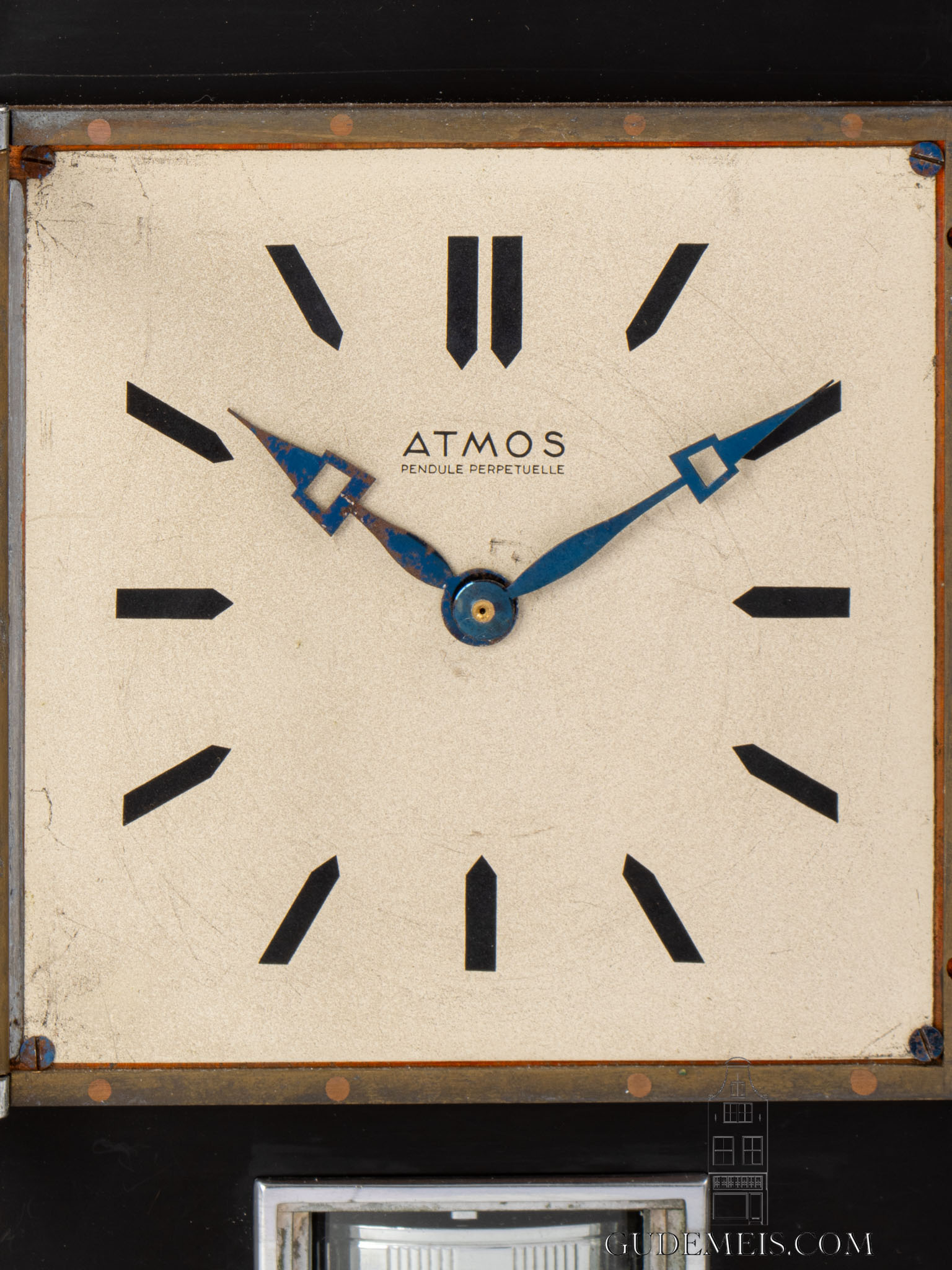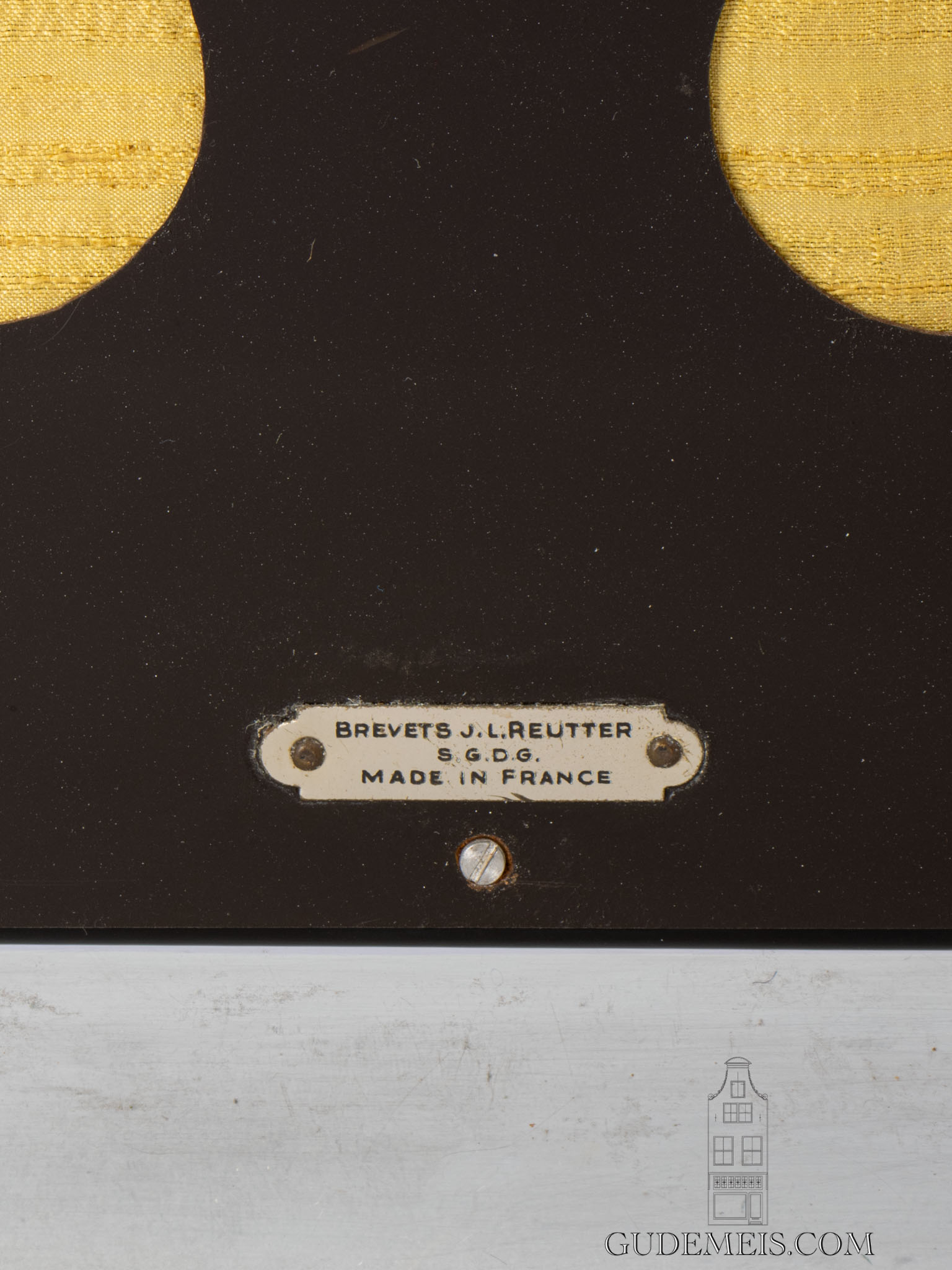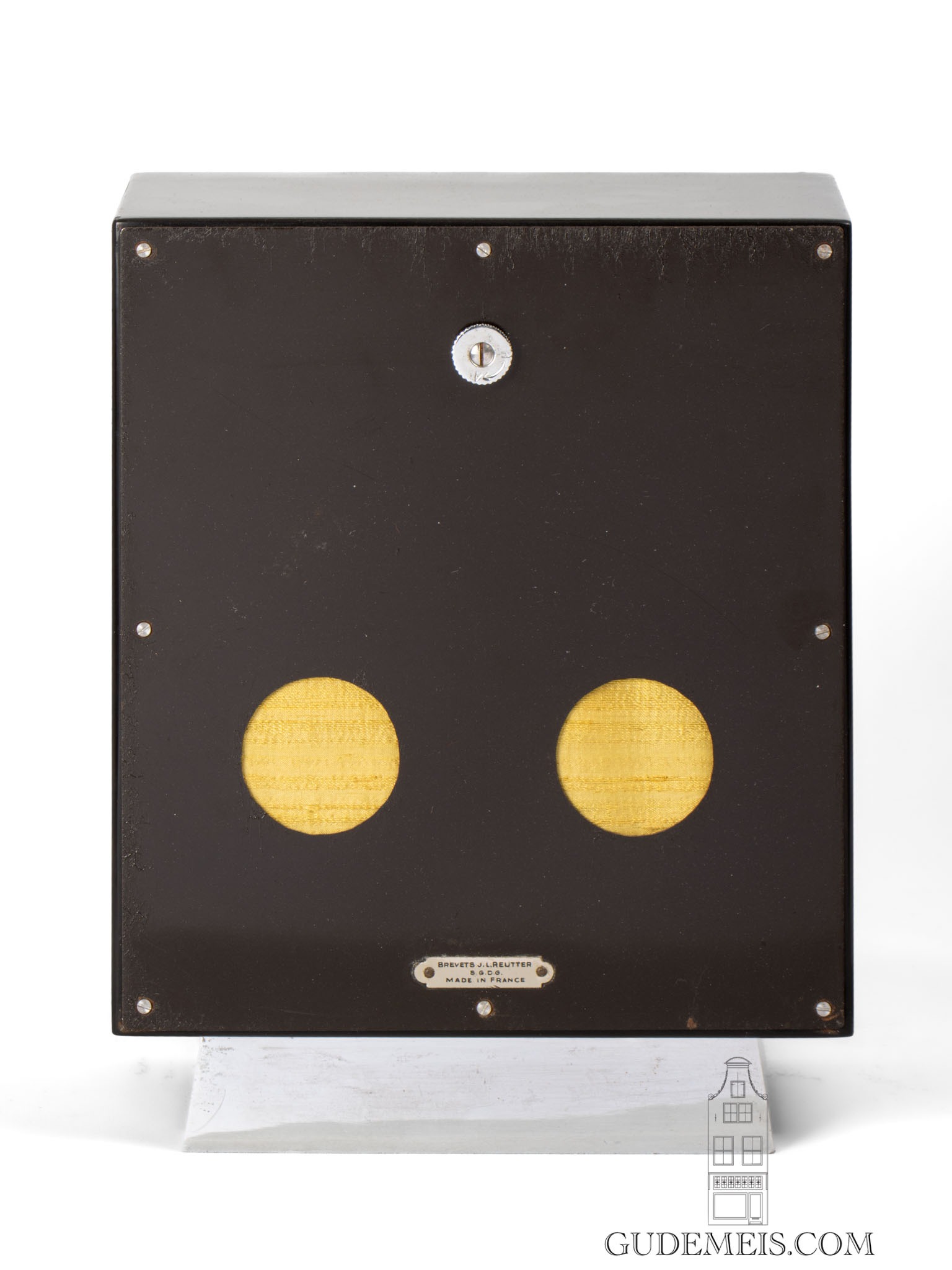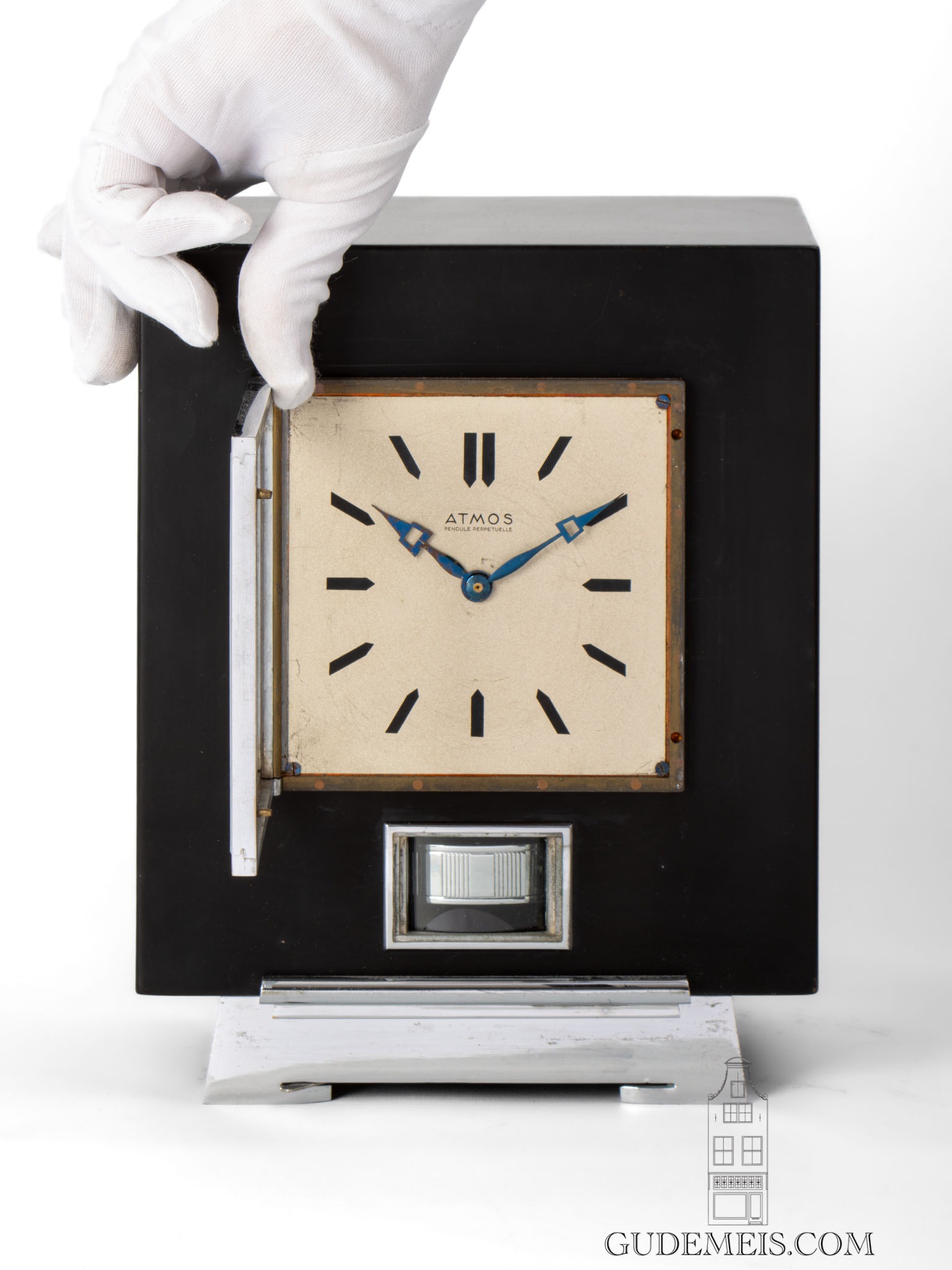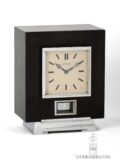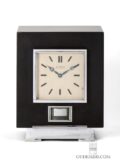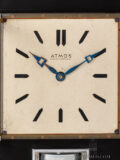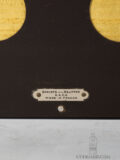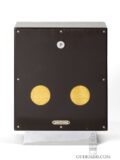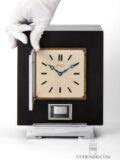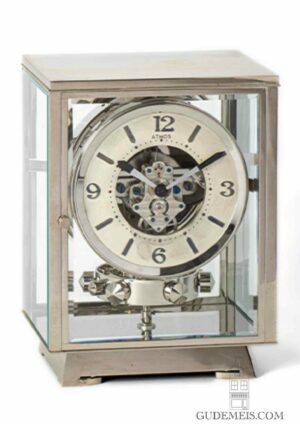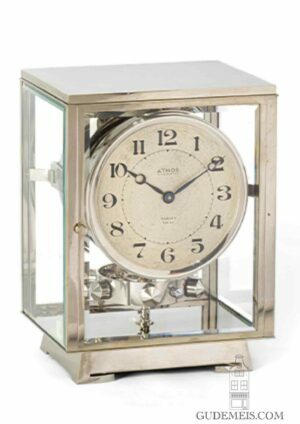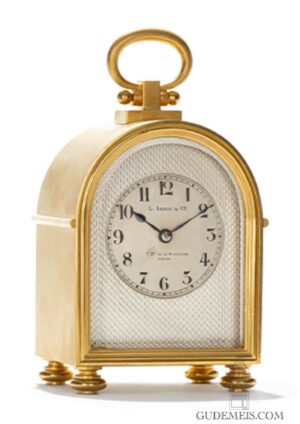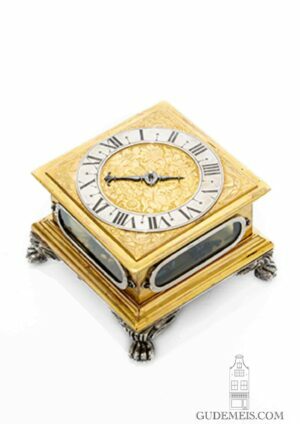A French Art Deco ebonised Reutter patent atmos clock, model A3 circa 1933
Description
Reutter patent Atmos
In 1927 Jean-Léon Reutter created his first prototype clock which driving spring is wound by temperature changes. After a number of adaptions and improvements a commercial production line of the Reutter patent Atmos was started up in the middle of 1929. There were a number of inventions that made this technical marvel possible. He used a torsion pendulum and made the suspension wire from elivar, an alloy insusceptible to temperature changes, which improved the precision very much. The movement was finely made and executed with ruby end stones causing it to need very little energy. In fact, the clock only needs 1/1000 of the energy that a conventional movement needs. These improvements were combined with his winding mechanism. This consists of a drum which can turn between two blocking pins. In the drum there is a U-shaped glass tube filled with mercury and ammonia gas of which one part is insulated. By changes in temperature the ammonia gas expands or retracts in comparison to the gas in the insulated half. This causes the mercury to shift which motion turns the drum. This turning winds a spring which drives the mechanism.
Between 1930 and 1938 these clocks were produced under the direction of Reutter. After that Jaeger -LeCoultre took over the patent. There are different versions of cases and there are variations in these types of cases. For example, this model A3 has a ebonized wooden case, while it was also available in other materials and colours. In addition to the interesting movement, this is of course also a beautifully designed clock and a fine example of the Art Deco style.
Atmos
The square lacquered dial has baton numerals and is marked ATMOS pendule perpetuelle. The blued steel hands are a beautiful Art Deco variation on the well-known Breguet hands.
Pendule Perpetuelle
The movement is powered by a spring. This spring is wound by the rotational movements of the drum caused by temperature differences. The movement requires so little energy that it continues to run for 48 hours at a temperature difference of one degree. The large balance wheel, visible through the window below, has a rotation time of 30 seconds. Because there are always temperature differences, the clock is constantly being wound. That is why Reutter also called the clock Pendule perpetuelle.
Art Deco
The rectangular case is made of ebonized wood. The door covering the dial, the frame of the lenticle below, and the canted base are made of nickel-plated brass. The geometrical silhouette and canted base are characteristic of Art Deco, the style of the 1920s and 1930s. On the back of the case, where the control knob is located, there is a plate with the inscription ‘BREVETS J.L. REUTTER S.G.D.G. MADE IN FRANCE’.
